-
 Bitcoin
Bitcoin $116400
-0.36% -
 Ethereum
Ethereum $4033
3.40% -
 XRP
XRP $3.302
-1.26% -
 Tether USDt
Tether USDt $1.000
-0.02% -
 BNB
BNB $796.1
1.67% -
 Solana
Solana $177.8
1.89% -
 USDC
USDC $0.9999
0.00% -
 Dogecoin
Dogecoin $0.2314
4.09% -
 TRON
TRON $0.3381
0.14% -
 Cardano
Cardano $0.7989
1.22% -
 Stellar
Stellar $0.4496
-1.84% -
 Chainlink
Chainlink $20.42
9.42% -
 Hyperliquid
Hyperliquid $41.17
0.88% -
 Sui
Sui $3.914
3.77% -
 Bitcoin Cash
Bitcoin Cash $584.7
1.52% -
 Hedera
Hedera $0.2632
-0.54% -
 Avalanche
Avalanche $24.09
3.40% -
 Ethena USDe
Ethena USDe $1.001
-0.02% -
 Litecoin
Litecoin $123.2
1.33% -
 Toncoin
Toncoin $3.318
-0.04% -
 UNUS SED LEO
UNUS SED LEO $8.984
-0.05% -
 Shiba Inu
Shiba Inu $0.00001323
2.85% -
 Uniswap
Uniswap $10.90
4.41% -
 Polkadot
Polkadot $3.999
3.34% -
 Dai
Dai $1.000
0.01% -
 Cronos
Cronos $0.1630
9.64% -
 Bitget Token
Bitget Token $4.484
0.82% -
 Monero
Monero $272.4
2.44% -
 Pepe
Pepe $0.00001173
6.03% -
 Aave
Aave $290.8
2.88%
What does it mean when the 5-day moving average crosses the 20-day? What does it mean when it crosses the 60-day?
MA5 crossing above MA20 or MA60 is a bullish signal, suggesting a potential price rise, while crossing below indicates bearish trends and possible declines.
Jun 02, 2025 at 02:43 pm
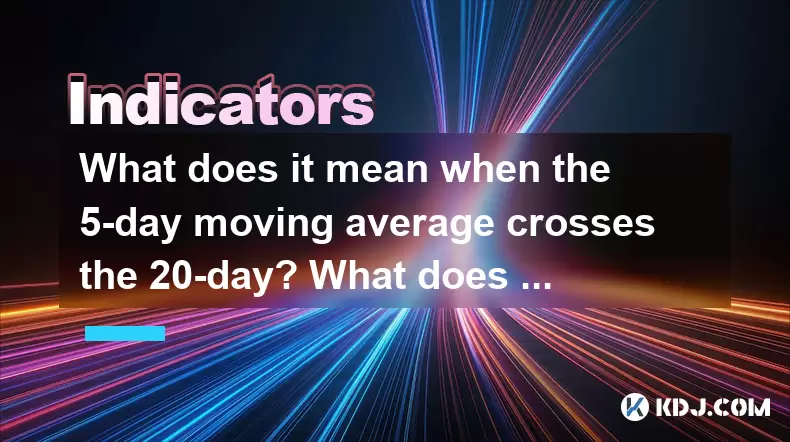
When discussing technical analysis in the cryptocurrency market, moving averages play a pivotal role in understanding trends and making trading decisions. The 5-day moving average (MA5) crossing the 20-day moving average (MA20), and the 5-day moving average crossing the 60-day moving average (MA60) are significant events that traders often monitor closely. This article will delve into what these crossovers mean, how they can be interpreted, and how they can influence trading strategies.
Understanding Moving Averages
Moving averages are used to smooth out price data to identify the direction of a trend. The 5-day moving average is calculated by taking the average closing price of a cryptocurrency over the past five days. Similarly, the 20-day moving average and 60-day moving average are calculated over their respective periods. These averages help traders to filter out the "noise" from random price fluctuations and gain a clearer view of the trend.
MA5 Crossing MA20
When the 5-day moving average crosses above the 20-day moving average, it is often considered a bullish signal. This crossover suggests that the short-term trend is gaining strength and may be overtaking the longer-term trend. Traders often interpret this as an indication that the price of the cryptocurrency is likely to continue rising.
Conversely, when the 5-day moving average crosses below the 20-day moving average, it is generally seen as a bearish signal. This crossover indicates that the short-term trend is weakening relative to the longer-term trend, suggesting that the price may start to decline.
MA5 Crossing MA60
The crossover between the 5-day moving average and the 60-day moving average is also a critical indicator for traders. When the 5-day moving average crosses above the 60-day moving average, it is typically viewed as a strong bullish signal. This crossover suggests that the short-term trend is not only outperforming the intermediate-term trend but also the long-term trend, indicating a potentially strong upward momentum in the price.
On the other hand, when the 5-day moving average crosses below the 60-day moving average, it is considered a strong bearish signal. This indicates that the short-term trend is weakening significantly compared to both the intermediate and long-term trends, suggesting that the price may be poised for a more substantial decline.
Using Moving Average Crossovers in Trading
Traders often use moving average crossovers as part of their trading strategies. Here are some ways these crossovers can be applied:
Entry and Exit Points: Traders may use the MA5 crossing above the MA20 or MA60 as a signal to enter a long position, anticipating a rise in price. Conversely, a MA5 crossing below the MA20 or MA60 may be used as a signal to exit a long position or enter a short position.
Confirmation with Other Indicators: While moving average crossovers can be powerful signals, they are often used in conjunction with other technical indicators such as the Relative Strength Index (RSI) or the Moving Average Convergence Divergence (MACD) to confirm the trend direction.
Risk Management: Traders should always consider their risk tolerance and use stop-loss orders to manage potential losses when trading based on moving average crossovers.
Practical Examples of Moving Average Crossovers
To illustrate how these crossovers work in practice, let's consider a hypothetical example involving Bitcoin (BTC).
Bullish Crossover Example: Suppose Bitcoin's 5-day moving average crosses above its 20-day moving average at a price of $30,000. A trader might interpret this as a signal to buy Bitcoin, expecting the price to rise. If the price continues to rise and the 5-day moving average later crosses above the 60-day moving average at $35,000, this could be seen as a confirmation of the bullish trend, prompting the trader to hold or even increase their position.
Bearish Crossover Example: Conversely, if Bitcoin's 5-day moving average crosses below its 20-day moving average at a price of $40,000, a trader might see this as a signal to sell or short Bitcoin, anticipating a decline. If the price continues to fall and the 5-day moving average later crosses below the 60-day moving average at $38,000, this could be interpreted as a strong bearish signal, reinforcing the trader's decision to exit or short the position.
Interpreting Crossovers in Different Market Conditions
The interpretation of moving average crossovers can vary depending on the overall market conditions. In a strong bull market, a MA5 crossing above the MA20 or MA60 might be seen as a confirmation of the ongoing bullish trend, prompting traders to buy or hold their positions. In a bearish market, a MA5 crossing below the MA20 or MA60 might be viewed as a confirmation of the bearish trend, leading traders to sell or short the cryptocurrency.
In sideways markets, moving average crossovers can be more challenging to interpret. Frequent crossovers might occur due to the lack of a clear trend, leading to what is known as whipsaws. Traders in such markets need to be cautious and may need to rely on additional indicators to confirm the validity of the crossovers.
FAQs
Q: Can moving average crossovers be used for all cryptocurrencies?
A: Yes, moving average crossovers can be applied to any cryptocurrency. However, the effectiveness of these signals can vary depending on the liquidity and volatility of the specific cryptocurrency. More liquid and less volatile cryptocurrencies might provide more reliable signals.
Q: How often should I check for moving average crossovers?
A: The frequency of checking for moving average crossovers depends on your trading style. Day traders might check multiple times a day, while swing traders might check daily or weekly. It's important to align your monitoring frequency with your trading strategy and time horizon.
Q: Are there any drawbacks to using moving average crossovers?
A: One of the main drawbacks is the potential for false signals, especially in volatile markets. Moving average crossovers can sometimes lag behind actual price movements, leading to late entry or exit points. Additionally, in sideways markets, frequent crossovers can lead to whipsaws, causing traders to enter and exit positions prematurely.
Q: Can moving average crossovers be used in conjunction with other trading strategies?
A: Absolutely, moving average crossovers are often used as part of a broader trading strategy. They can be combined with other technical indicators, such as the RSI or MACD, to confirm trends and reduce the likelihood of false signals. Additionally, fundamental analysis can provide a more comprehensive view of the market, enhancing the effectiveness of moving average crossovers.
Disclaimer:info@kdj.com
The information provided is not trading advice. kdj.com does not assume any responsibility for any investments made based on the information provided in this article. Cryptocurrencies are highly volatile and it is highly recommended that you invest with caution after thorough research!
If you believe that the content used on this website infringes your copyright, please contact us immediately (info@kdj.com) and we will delete it promptly.
- SHIB Price, Meme Coin Mania, and the 250x Potential Hunt
- 2025-08-09 16:30:13
- SOL, ETFs, and AI: Crypto's Triple Threat Sensation!
- 2025-08-09 17:10:12
- Tokenized Stock on Solana: SOL Price Reacts to Exodus's Bold Move
- 2025-08-09 17:10:12
- Cardano, Mutuum Finance, Millionaires 2025: A New Wave of Crypto Fortunes?
- 2025-08-09 17:50:12
- Meme Coins on Blockchains in 2025: Hype or the Future?
- 2025-08-09 16:50:11
- World Liberty Financial, Public Listing, and WLFI Tokens: A New York Minute on the Trump-Backed Crypto Venture
- 2025-08-09 16:50:11
Related knowledge

What does it mean when the Triple Moving Average (TRIX) turns downward but the price doesn't fall?
Aug 09,2025 at 12:42pm
Understanding the Triple Moving Average (TRIX) IndicatorThe Triple Moving Average, commonly known as TRIX, is a momentum oscillator designed to filter...

What does it mean when the Williams' oscillator repeatedly hits bottoms but fails to rebound?
Aug 09,2025 at 09:28am
Understanding the Williams %R OscillatorThe Williams %R oscillator, developed by Larry Williams, is a momentum indicator used in technical analysis to...
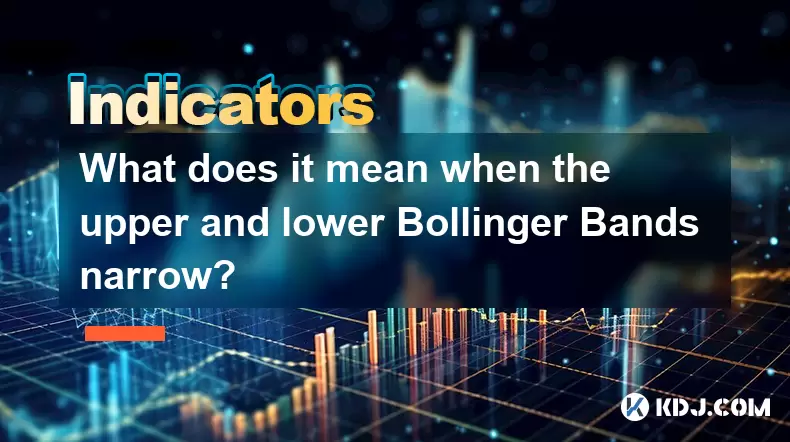
What does it mean when the upper and lower Bollinger Bands narrow?
Aug 09,2025 at 03:00pm
Understanding Bollinger Bands in Cryptocurrency TradingBollinger Bands are a widely used technical analysis tool in the cryptocurrency market, develop...
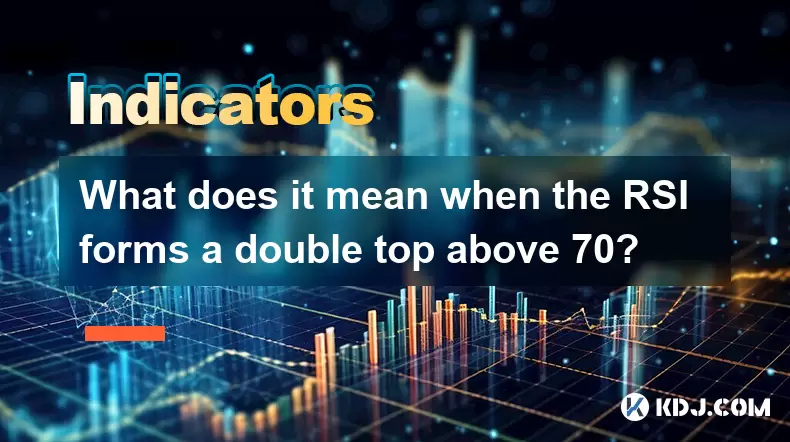
What does it mean when the RSI forms a double top above 70?
Aug 09,2025 at 05:50pm
Understanding the RSI and Overbought ConditionsThe Relative Strength Index (RSI) is a momentum oscillator that measures the speed and change of price ...
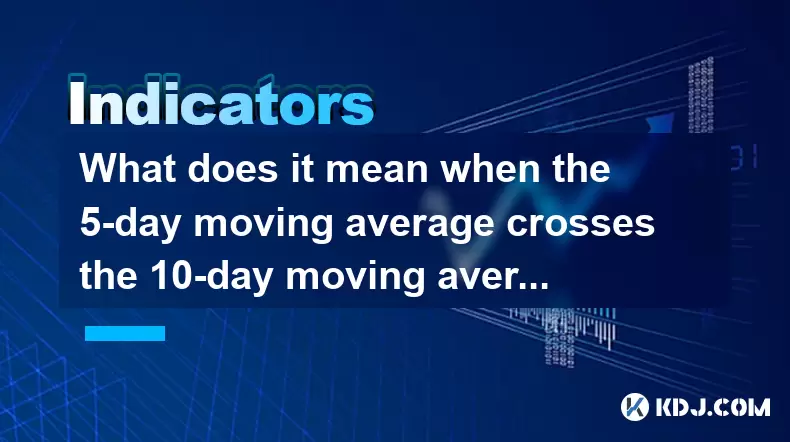
What does it mean when the 5-day moving average crosses the 10-day moving average but the 20-day moving average remains upward?
Aug 09,2025 at 03:35pm
Understanding Moving Averages in Cryptocurrency TradingMoving averages are foundational tools in technical analysis, especially within the cryptocurre...
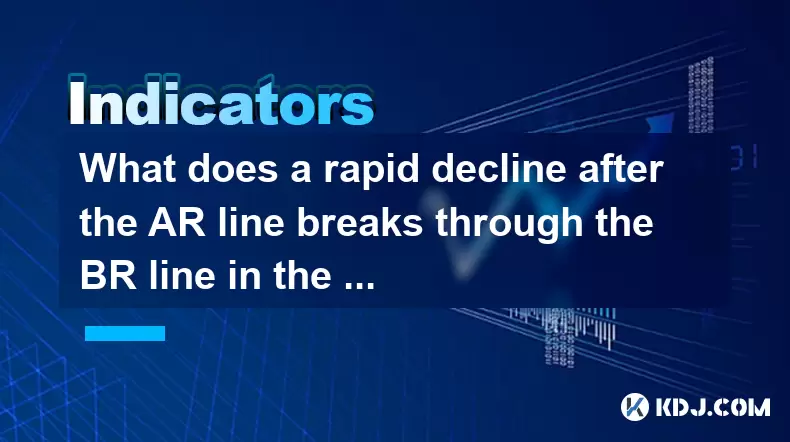
What does a rapid decline after the AR line breaks through the BR line in the ARBR indicator indicate?
Aug 09,2025 at 04:42pm
Understanding the ARBR Indicator ComponentsThe ARBR indicator is a technical analysis tool that combines two oscillators: the AR (Amplitude Ratio) and...

What does it mean when the Triple Moving Average (TRIX) turns downward but the price doesn't fall?
Aug 09,2025 at 12:42pm
Understanding the Triple Moving Average (TRIX) IndicatorThe Triple Moving Average, commonly known as TRIX, is a momentum oscillator designed to filter...

What does it mean when the Williams' oscillator repeatedly hits bottoms but fails to rebound?
Aug 09,2025 at 09:28am
Understanding the Williams %R OscillatorThe Williams %R oscillator, developed by Larry Williams, is a momentum indicator used in technical analysis to...

What does it mean when the upper and lower Bollinger Bands narrow?
Aug 09,2025 at 03:00pm
Understanding Bollinger Bands in Cryptocurrency TradingBollinger Bands are a widely used technical analysis tool in the cryptocurrency market, develop...

What does it mean when the RSI forms a double top above 70?
Aug 09,2025 at 05:50pm
Understanding the RSI and Overbought ConditionsThe Relative Strength Index (RSI) is a momentum oscillator that measures the speed and change of price ...

What does it mean when the 5-day moving average crosses the 10-day moving average but the 20-day moving average remains upward?
Aug 09,2025 at 03:35pm
Understanding Moving Averages in Cryptocurrency TradingMoving averages are foundational tools in technical analysis, especially within the cryptocurre...

What does a rapid decline after the AR line breaks through the BR line in the ARBR indicator indicate?
Aug 09,2025 at 04:42pm
Understanding the ARBR Indicator ComponentsThe ARBR indicator is a technical analysis tool that combines two oscillators: the AR (Amplitude Ratio) and...
See all articles

























































































